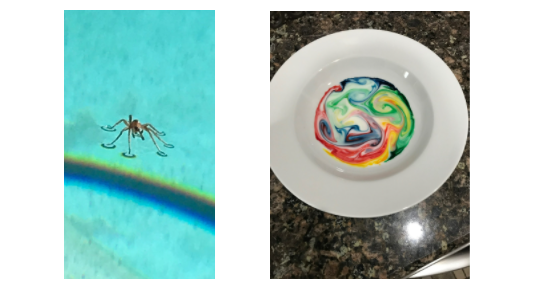Food for Thought
Yanny Salom, Trustey Fellows Cohort 2 - Holy Family Catholic School in Jacksonville, FL

As we begin school in the midst of the pandemic, practicing social distancing protocols and developing new skills for distance learning does not mean that we have restricted our minds and spirits. As people of faith and STEM Trustey Fellows, God has not given us a spirit of fear, but a spirit of power, of love, and a sound mind (2 Timothy 1:7). We must use this unprecedented time to encounter opportunities in all circumstances, to cultivate a sense of community in our niche interests, and to find different ways to stay faithful, joyful, creative, and connected. The meaningful “Ideas Worth Sharing Webinars” offered by our STEM family is one of the ways I have stayed connected.
During the most recent webinar, “Building Community for Remote Learning,” we discussed the use of common household materials to provide a feasible way to implement STEM during distance learning. That idea stayed with me, and I built on it to develop some STEM initiatives during distance learning. Before the end of the school year, my eighth-grade students demonstrated their knowledge of temperature and thermal energy by designing and building an insulated cooler with household materials to keep an ice cube frozen for one hour.
Using what is near to us is an excellent way to keep students engaged. In the webinar, we discussed the importance of observing nature as a way for students to interact with the natural world. I decided to ask my students to take pictures of natural phenomena they encountered in their own lives. As expected, this was an amazing way to connect with my curious students, who are always wondering about the world around them. One student sent me a picture of a bug standing on a pool. Our class asked: how could the bug be supported by a liquid? To discuss this phenomenon and generate a discussion based on evidence, I needed an experiment with simple materials that my students had accessible at home. I remembered one experiment I had done before with kitchen and household items: milk, food coloring, and dish soap. I assigned this experiment, asked for a Predict- Observe- Explain (POE) chart, and the result was a meaningful, relevant, and enjoyable experience for my students to explore and discuss the unique properties of water. This activity also opened up doors to a new world of opportunities in food science.

My students aren’t the only ones engaging in food science these days. Due to my gluten-intolerance, I have been on a personal quest to discover ways to bake gluten-free options. I am currently on a sabbatical while I await an upcoming surgery, and I will spend my time learning more about how to simulate the effects of gluten in my gluten-free dough. I have performed many controlled experiments and transformed my home kitchen into my lab to create a spongy and elastic dough with flours that do not contain gluten. Once again, I can see the beauty of scientific methods and how they are interrelated with the engineering design process to provide solutions.
The value of STEM in food science is unmeasurable. To engage students in critical thinking, we can ask them to analyze and evaluate different ingredients and methods for cooking decisions. To help students form evidence-based opinions, we can task students with interpreting food labels and health claims for different food products. Expanding beyond the realm of science, we can ask students to consider how technology has contributed to the food we eat and the way we cook it – from the discovery of fire, to the use of electricity, to all the new technologies in food preparation, storage, and processing. One of my goals during this sabbatical is to figure out how to bring these ideas about food science back to my classroom with a strong emphasis on STEM. One resource I am reaching out to for guidance is my local 4-H organization. They have a very comprehensive program on family and consumer sciences and simple activities that can be easily implemented in a classroom such as “Inspiring Kids to Do Bread in a Bag.” You can find out more about your own local chapter here.
STEM teaching is similar to good cooking. Both feed people and nourish their bodies, minds, and spirits. Cooking and teaching require patience, flexibility to work with the available resources, experimentation, and dealing with failure and uncertainty in a creative way. Thomas Keller once said “A recipe has no soul. You as the cook must bring soul to the recipe,” and this is precisely what we are called to do in the teaching profession.


